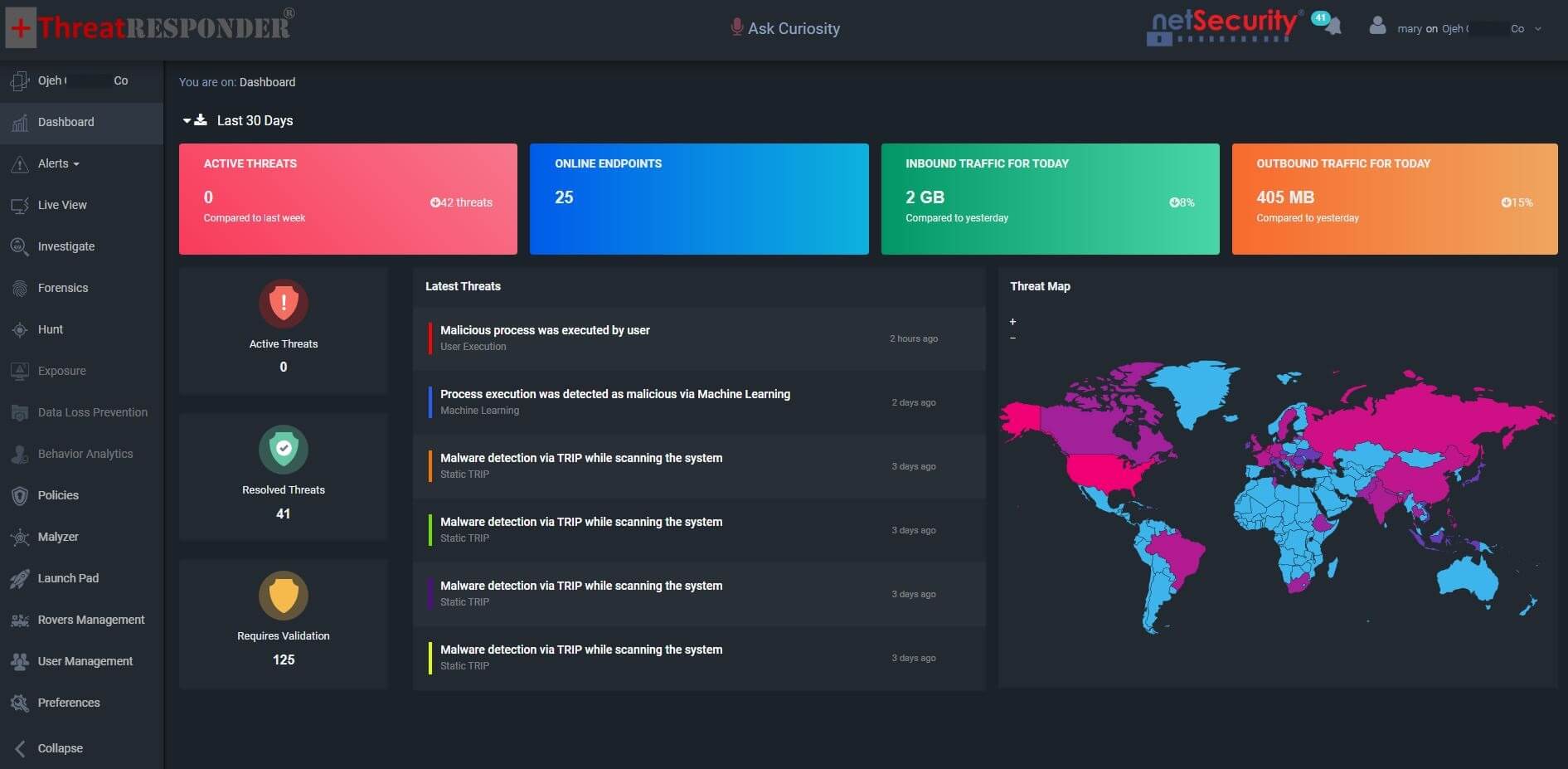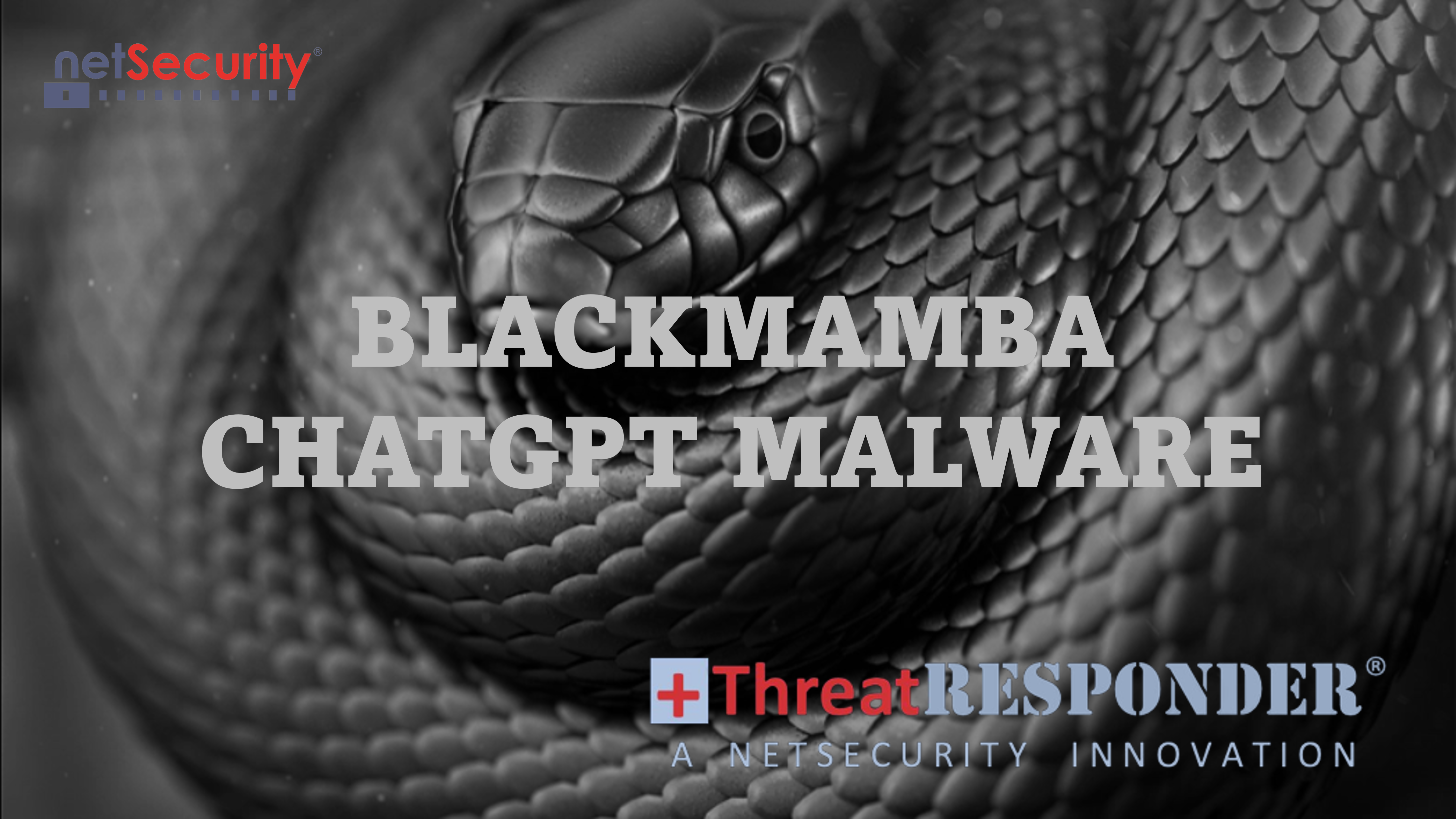Tackle AI Malware with AI: BlackMamba ChatGPT Vs ThreatResponder
What is BlackMamba?
The BlackMamba malware is a proof-of-concept (PoC) infection that uses a benign executable to connect with a high-reputation artificial intelligence (OpenAI) at runtime and retrieve malicious code designed to steal keystrokes from infected users.
By utilizing AI, the authors intend to overcome two primary challenges to evading detection. In order to make BlackMamba traffic appear benign, they retrieve payloads from a “benign” remote source instead of an anomalous C2. Their second goal was to fool security solutions into thinking the returned code was not malicious by utilizing a generative AI that would deliver unique malware payloads every time.
Using Python’s exec() function, BlackMamba executes the dynamically generated code it receives from the AI. Despite being in memory, the malicious polymorphic portion is still able to be detected by existing EDR solutions.
In the cybersecurity community, however, such challenges are well understood. There have been instances in the past when “benign” channels like Pastebin, Dropbox, Microsoft Azure, Amazon Web Services, and other cloud infrastructure have been abused in order to hide malicious traffic.
It is also not uncommon for malware to take on polymorphic forms; among other things, polymorphic malware contributed to the industry’s move beyond legacy AV solutions towards next-gen AI-driven solutions.
How BlackMamba ChatGPT Malware Works?
The BlackMamba ChatGPT is a type of malware that combines the functionality of a remote access Trojan (RAT) and a chatbot. The malware is designed to infect computers and allow remote access to the attacker, who can then use the malware to perform a variety of malicious activities, such as stealing sensitive information, spying on the user, or using the computer as part of a botnet.
The ChatGPT component of the malware allows the attacker to communicate with the infected computer using natural language processing (NLP) techniques. This means that the attacker can send commands to the malware using human language, making it easier to control and manipulate.
The BlackMamba ChatGPT malware is usually spread through email phishing campaigns or by exploiting vulnerabilities in software and operating systems. Once the malware has infected a computer, it can be very difficult to detect and remove, as it is designed to evade detection by antivirus software and other security measures.
How to Prevent Your Organization from BlackMamba ChatGPT Malware?
As cyber threats continue to evolve, it’s becoming increasingly important for organizations to take a proactive approach to cybersecurity. Malware like BlackMamba ChatGPT can be particularly insidious, as it is designed to evade detection and steal sensitive information. Fortunately, there are steps that organizations can take to prevent and detect this type of malware, including using advanced solutions like NetSecurity’s ThreatResponder.
NetSecurity’s ThreatResponder is an advanced endpoint protection platform that uses cloud-native machine learning to detect and prevent threats. ThreatResponder has a range of capabilities that can help organizations to protect against BlackMamba ChatGPT and other types of malware. These include:
- AI-based threat detection: ThreatResponder uses machine learning algorithms to identify and classify threats based on behavior patterns. This enables it to detect and block new and unknown threats, including those that are designed to evade traditional antivirus software.
- Threat prevention: ThreatResponder uses a range of techniques to prevent malware infections from taking hold, including URL filtering, file reputation analysis, and behavioral analysis.
- Threat hunting: ThreatResponder includes a range of tools and capabilities that enable security teams to investigate and respond to potential threats. This includes real-time threat visibility, historical data analysis, and automated incident response.
- Vulnerability management: ThreatResponder includes capabilities for identifying and managing vulnerabilities in software and systems. This can help to prevent malware infections that exploit known vulnerabilities.
- Forensic investigation: In the event of a malware infection, ThreatResponder includes forensic investigation tools that enable security teams to understand how the malware entered the system, what data was compromised, and what actions were taken.
 Want to try our ThreatResponder, cutting-edge Endpoint Detection & Response (EDR), and ThreatResponder FORENSICS, the Swiss knife for forensic investigators in action? Click on the below button to request a free demo of our NetSecurity’s ThreatResponder platform.
Want to try our ThreatResponder, cutting-edge Endpoint Detection & Response (EDR), and ThreatResponder FORENSICS, the Swiss knife for forensic investigators in action? Click on the below button to request a free demo of our NetSecurity’s ThreatResponder platform.
Disclaimer
The page’s content shall be deemed proprietary and privileged information of NETSECURITY CORPORATION. It shall be noted that NETSECURITY CORPORATION copyrights the contents of this page. Any violation/misuse/unauthorized use of this content “as is” or “modified” shall be considered illegal and subjected to articles and provisions that have been stipulated in the General Data Protection Regulation (GDPR) and Personal Data Protection Law (PDPL).











